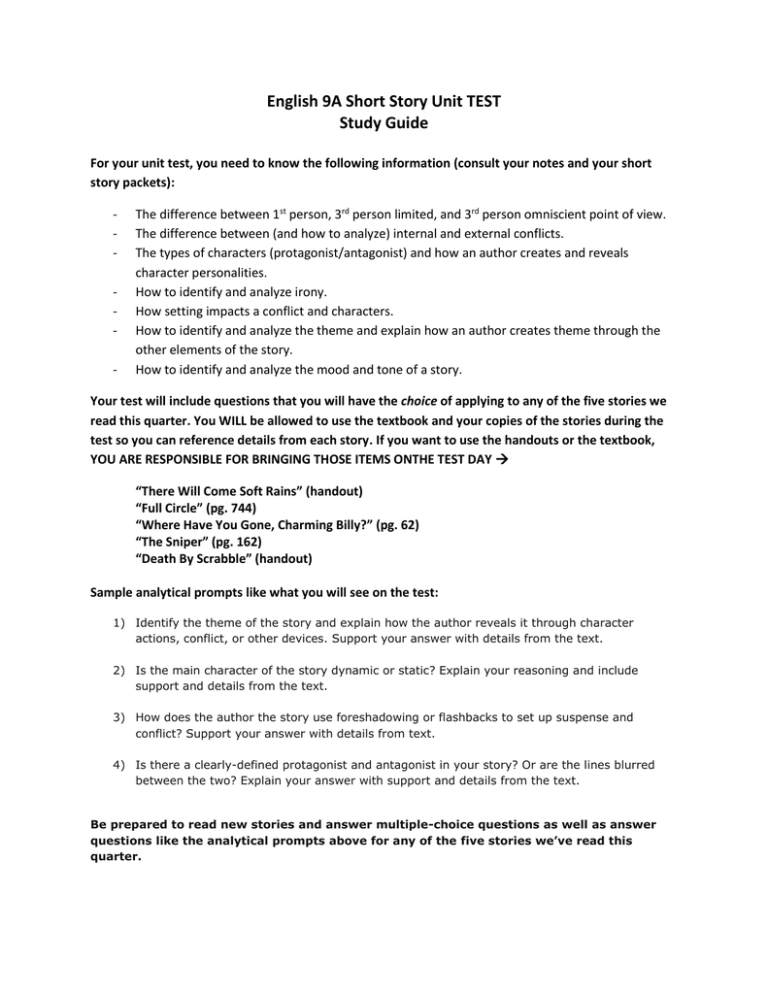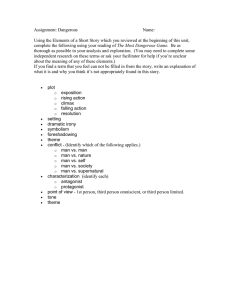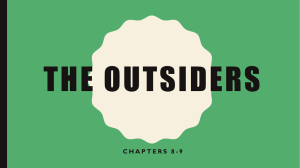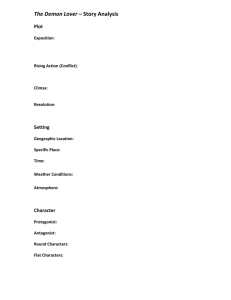English 9A Short Story Unit TEST Study Guide
advertisement

English 9A Short Story Unit TEST Study Guide For your unit test, you need to know the following information (consult your notes and your short story packets): - The difference between 1st person, 3rd person limited, and 3rd person omniscient point of view. The difference between (and how to analyze) internal and external conflicts. The types of characters (protagonist/antagonist) and how an author creates and reveals character personalities. How to identify and analyze irony. How setting impacts a conflict and characters. How to identify and analyze the theme and explain how an author creates theme through the other elements of the story. How to identify and analyze the mood and tone of a story. Your test will include questions that you will have the choice of applying to any of the five stories we read this quarter. You WILL be allowed to use the textbook and your copies of the stories during the test so you can reference details from each story. If you want to use the handouts or the textbook, YOU ARE RESPONSIBLE FOR BRINGING THOSE ITEMS ONTHE TEST DAY “There Will Come Soft Rains” (handout) “Full Circle” (pg. 744) “Where Have You Gone, Charming Billy?” (pg. 62) “The Sniper” (pg. 162) “Death By Scrabble” (handout) Sample analytical prompts like what you will see on the test: 1) Identify the theme of the story and explain how the author reveals it through character actions, conflict, or other devices. Support your answer with details from the text. 2) Is the main character of the story dynamic or static? Explain your reasoning and include support and details from the text. 3) How does the author the story use foreshadowing or flashbacks to set up suspense and conflict? Support your answer with details from text. 4) Is there a clearly-defined protagonist and antagonist in your story? Or are the lines blurred between the two? Explain your answer with support and details from the text. Be prepared to read new stories and answer multiple-choice questions as well as answer questions like the analytical prompts above for any of the five stories we’ve read this quarter.



